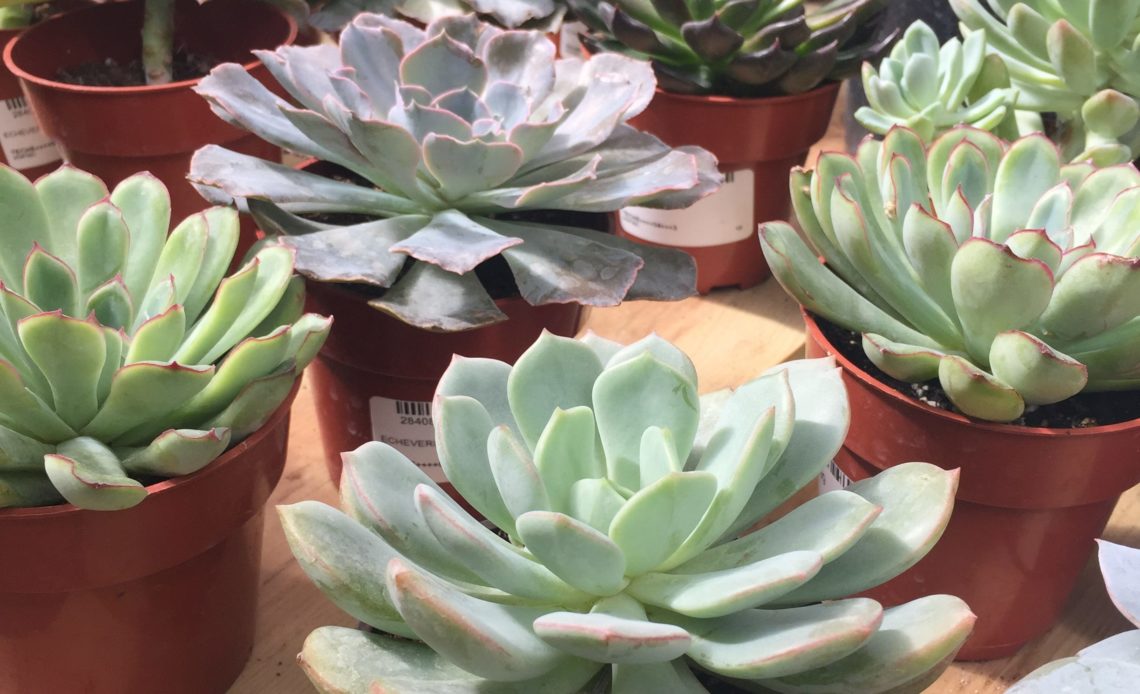
After this past summer I realized that I had a deep interest in succulents, I immediately wanted to learn everything I could about propagation, care and identification.When I see a species that is new to me, I want to research it and read all about it. One thing I couldn’t figure out, among other things, is how to tell the difference between an echeveria and a sempervivum. The labels at my local nursery typically read “succulent” with very little information about species.
I really want to know what I am buying otherwise I end up getting something I already have, which has happened. Although I am getting better at succulent identification, there are some succulents and plants, for that matter, that are really hard to distinguish. Even with experience, there are just going to be times when you won’t know what you’ve got (just google Echeveria Pludonis, Starlite or Sagita)
With the help of Wikipedia, I have compiled a succulent identification guide to assist in learning the characteristics of different succulent types. For now, I have researched the species that are most common to gardens and containers, but will update as I discover more interesting species that succulent lovers are crushing over. Let’s get started:
Crassulaceae Family
Genus Sedum:
This genus contains over 470 species ranging from creeping herbs to shrubs. It is a flowering plant commonly known as Stonecrops. You’ll find them as great ground cover, sometimes with blooming flowers containing five petals.
Look For: large bunches of Spilling plants with hanging stems.
Most Common: “String of Pearls” and “Burro or Donkey’s Tail”
Hybrids: Sedeveria (Sedum x Echeveria)
For a more in depth look at this genus, check out this post and video on how to identify sedum.
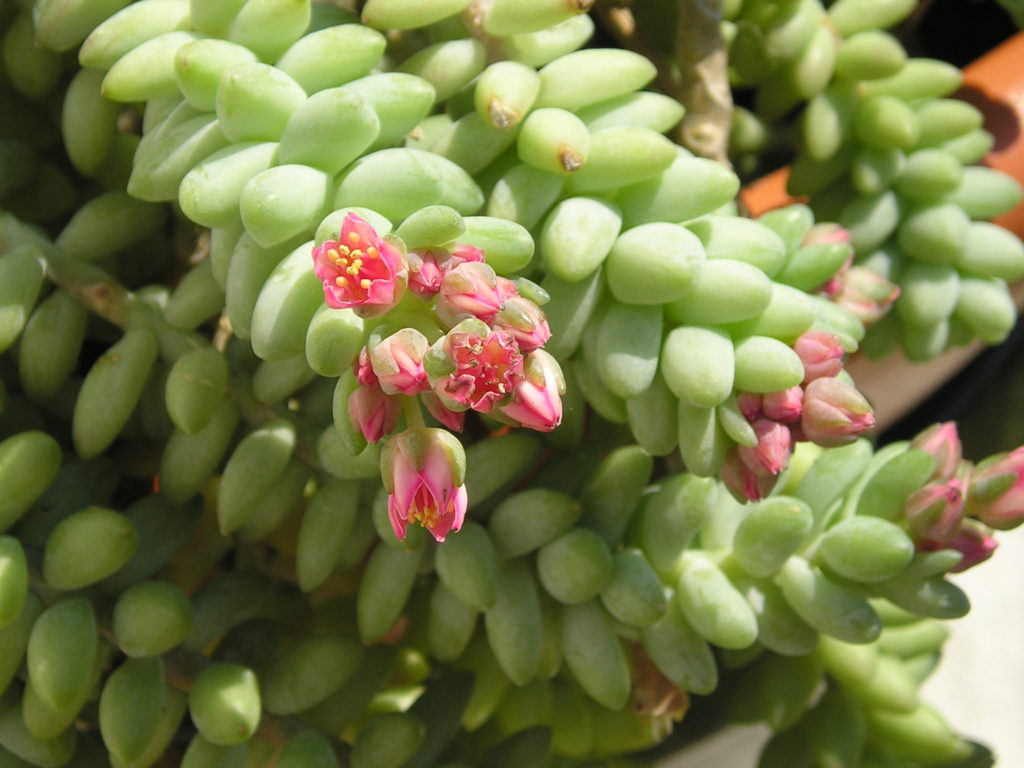
Sedum Morganianum “Donkey’s Tail”
By Morningdew51 at English Wikipedia, CC BY-SA 3.0,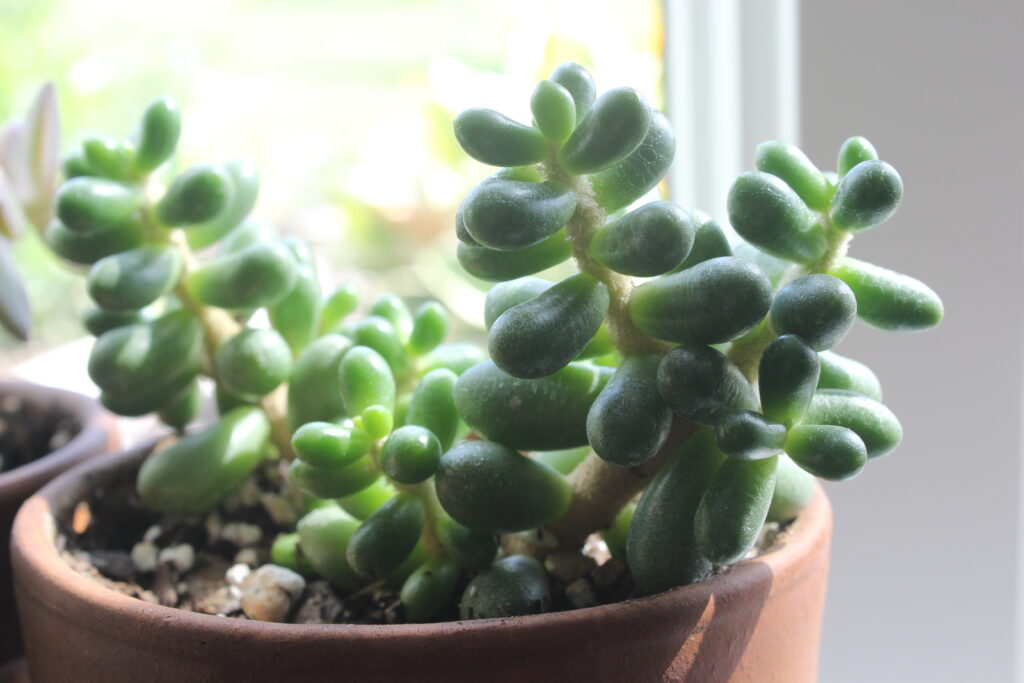
Sedum Hernandezii | SuburbanSill
Genus Echeveria:
Probably to most popular genus, the echeveria has tight rosettes on top of short stalks, often with brightly colored leaves growing out from the center. For me, these plants are the hardest to I.D. There are tons of species and some are very hard to tell apart. Share your echeveria with our succulent identification guide by contact us here!
Look For: Rosettes with round ends or leaves with a point. Colorful margins around the leaves.
Most Common: There are tons of varieties, but your might find Echeveria ‘Lola’, Echeveria ‘Elegans’ or Perle Von Nunburg.
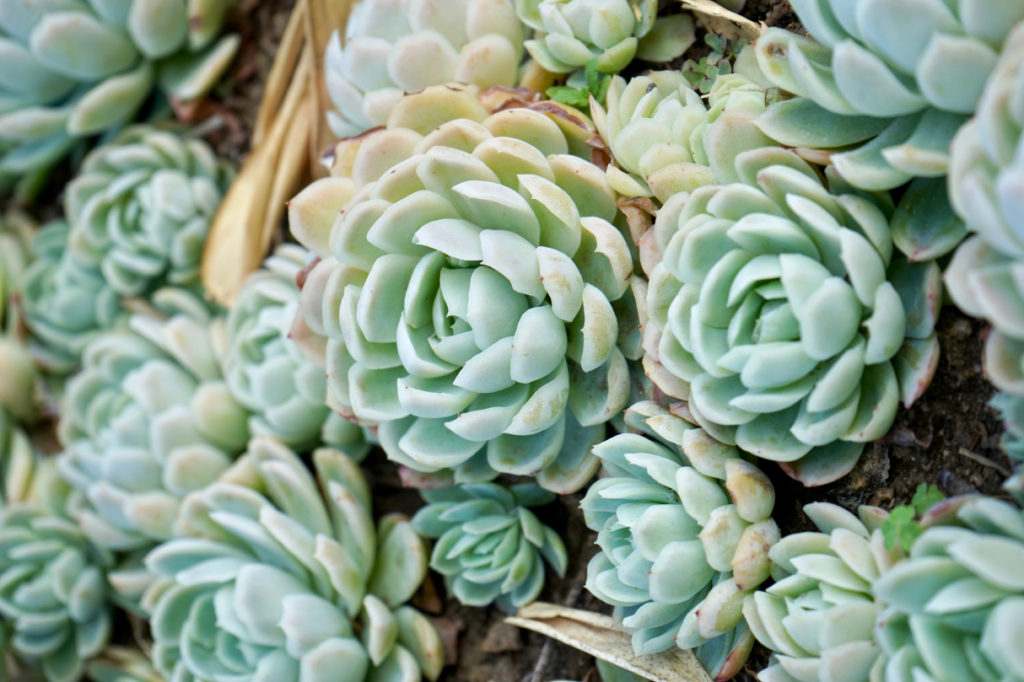
Echeveria Elegans By Eria Wei – Own work 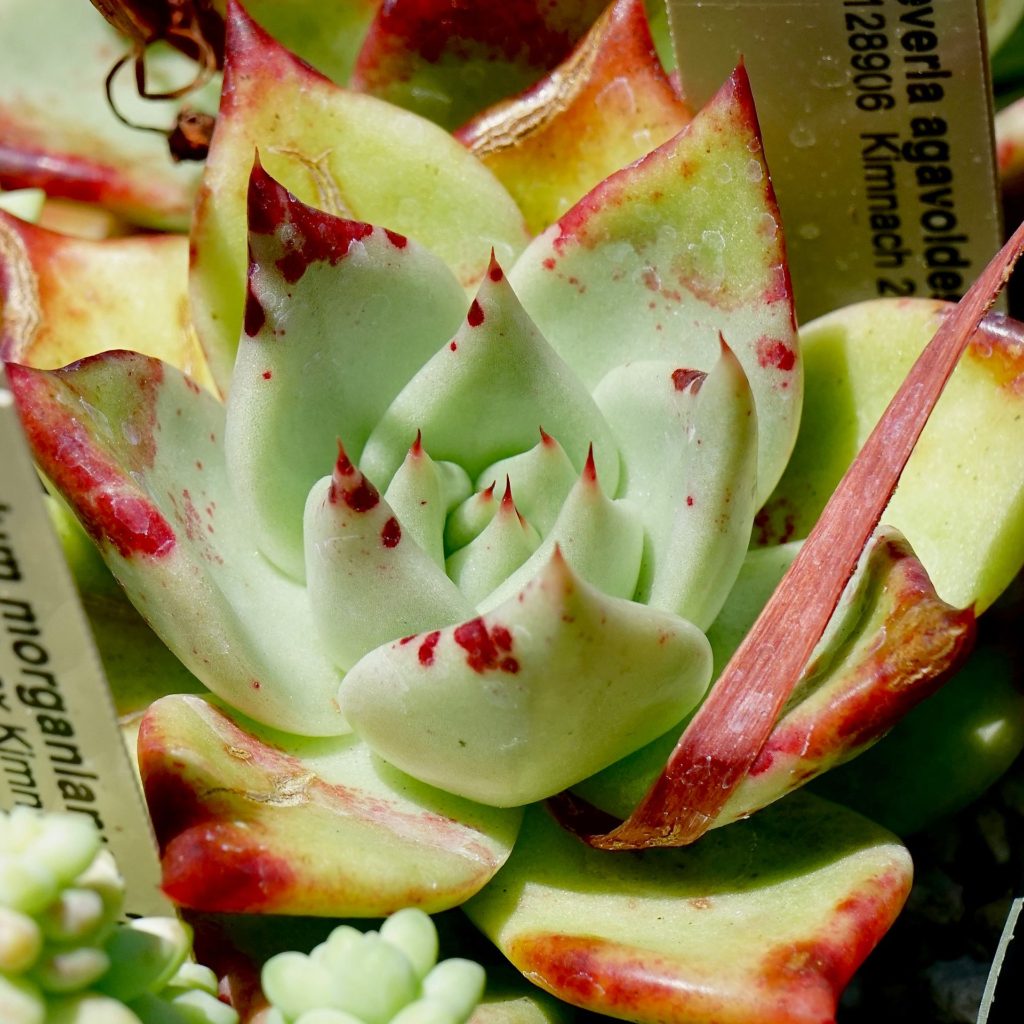
Echeveria Agavoides By Eria Wei – Own work 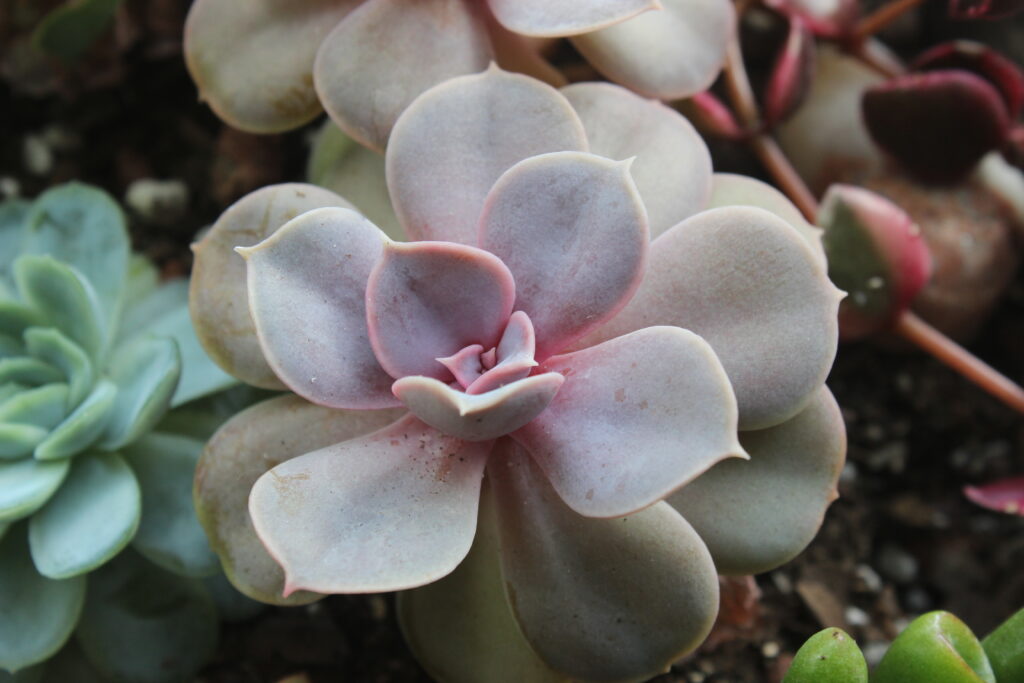
Perle Von Nurnberg | SuburbanSill
Genus Cotyledon:
Succulent shrublets with a woody type stem and fleshy succulent leaves. Leaves emerge in pairs opposite each other
Most Common: Cotyledon tomentosa “Bear Paw
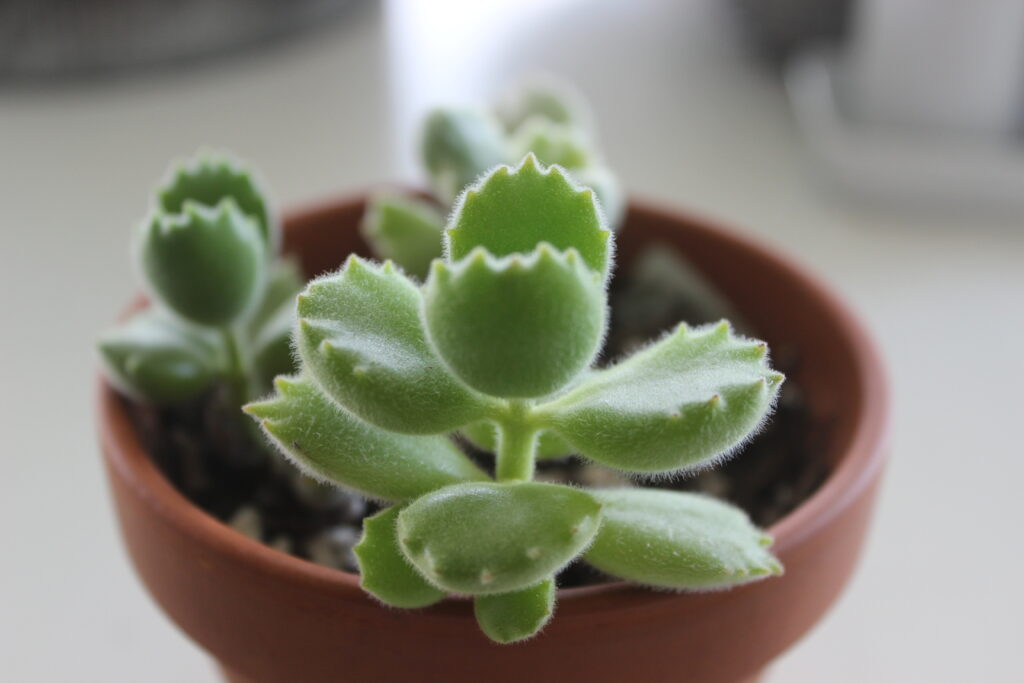
Genus Pachyphytum:
This succulent is identified by its thick leaves…almost pillow like. It’s hybrid cousin, Pachyveria, is a mix of Pachyphytum and Echeveria. They tend to be water sensitive and leaves can fall of easily.
Look For: Puffy fat leaves in a variety of colors. When they are premature, they almost look like candy. Pachyveria will resemble an Echeveria in growth, but with fat leaves. Pachyphytum will grow out on a stalk with rows of leaves, more like sedum.
Most Common: Pachyphytum Oviferum “Moon Stones”
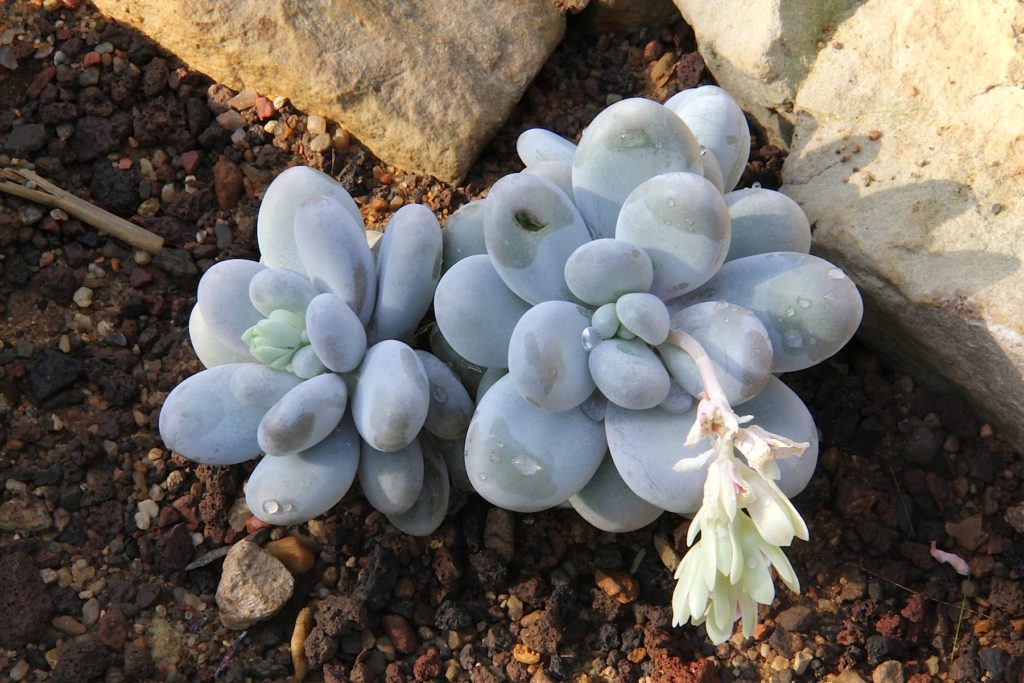
Genus Graptopetalum:
Similar to Echeveria with their tight rosettes, this genus is a bit more leggy and grows on longer stalks that spill over the side of containers.
Look For: Echeveria type rosettes on long branches with leaves spaced down like a vine.
Most Common: Graptopetalum paraguayense “Ghost Plant”, Graptopetalum filiferum “Silver Star” (a hybrid echeveria and grapto “Graptoveria”)
Hybrids: Graptosedum (Graptopetalum x Sedum) Graptoveria (Graptopetalum x Echeveria)
Genus Kalanchoe:
The Kalanchoe is characterized by opening their flowers by creating new petals on the inside and forcing them open. Kalanchoe flowers are usually divided into 4 sections.
Look For: There are many different species of kalanchoe, but one common theme I see among them is that they grow tall and skinny. Might have large flat leaves and some Kalanchoe propagate by growing little baby plants on the outer rims of their leaves.
Most Common: Kalanchoe tomentosa and “Flap Jacks”.
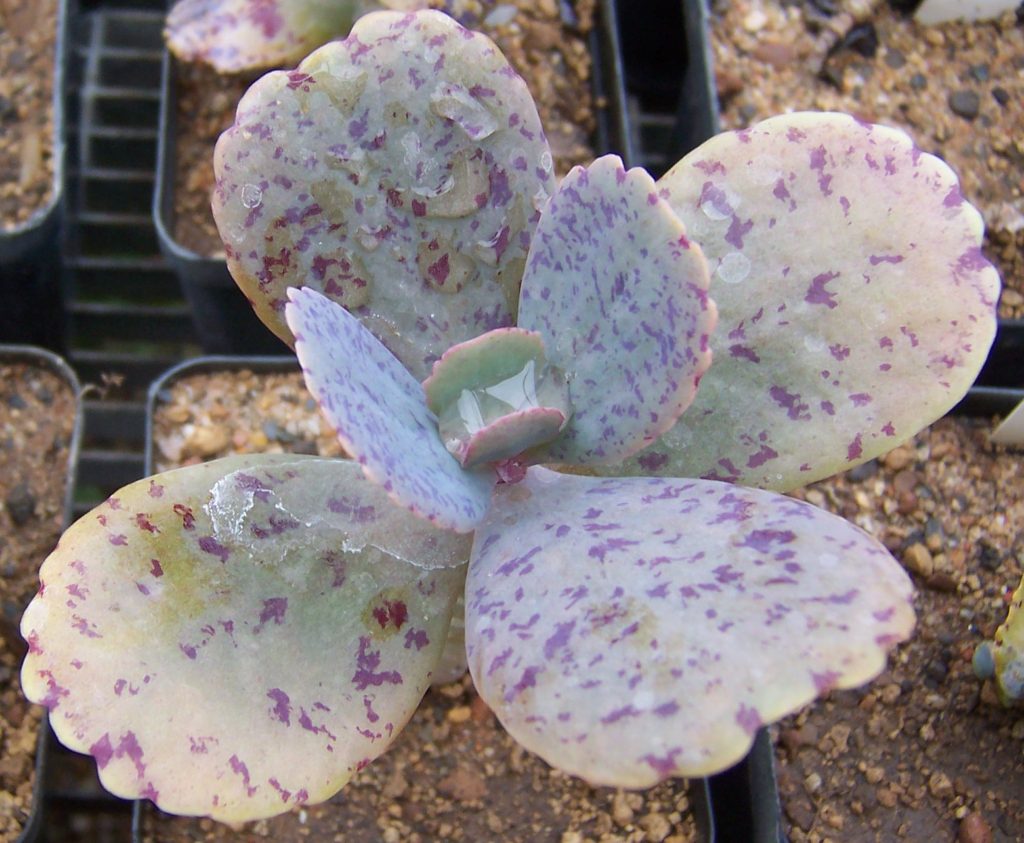
Kalanchoe Marmorata – Dysmorodrepanis – Own photo, Cologne University Botanical Collection 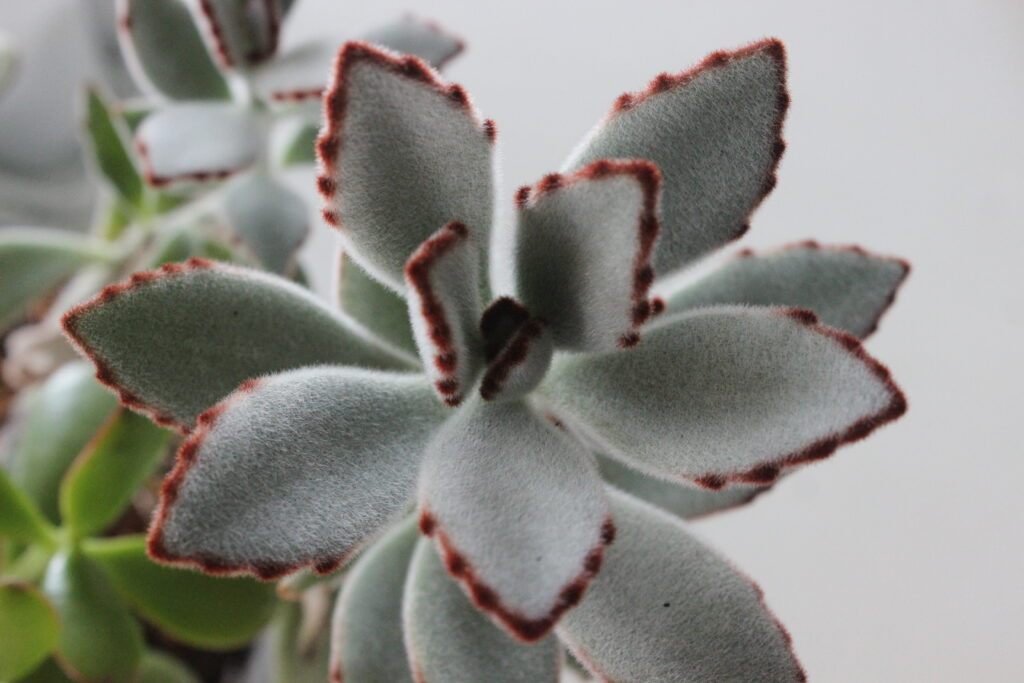
Kalanchoe tomentosa “Panda Plant” | SuburbanSill 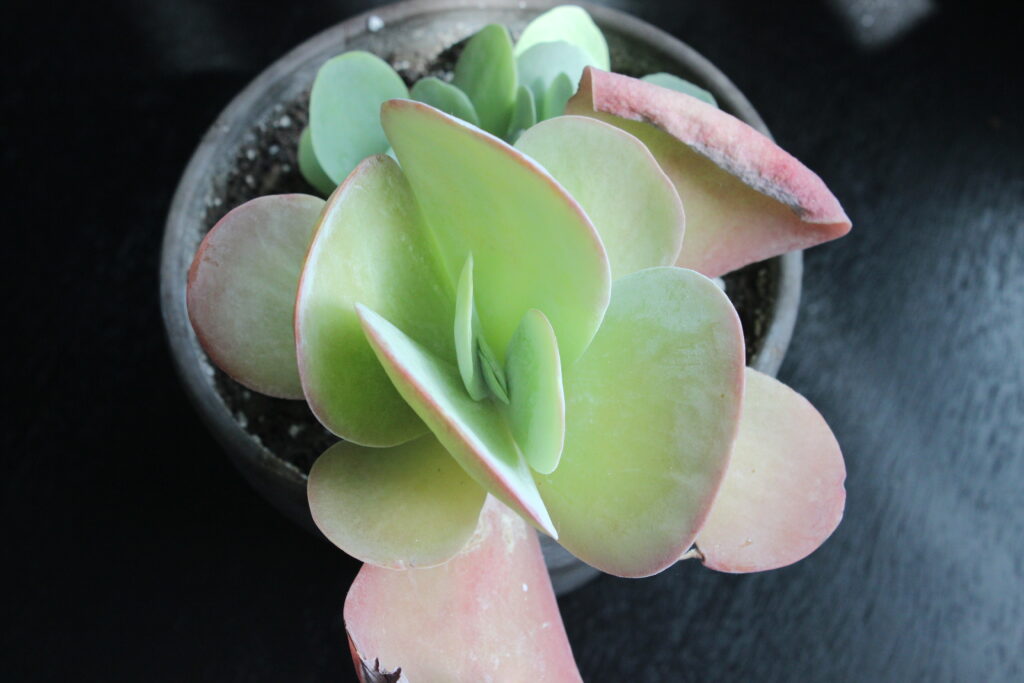
Kalanchoe thrysiflora “Flap Jacks” | SuburbanSill
Genus Bryophyllum:
Previously known as a part of the Kalanchoe genus, Bryophyllum is a group of plants that grows its offspring on the out edge of its leaves. There are about 40 species on the group native to South Africa and Madagascar
Most Common: Bryophyllum daigremontiana “Mother of Thousands”
Learn Mother of Thousands propagation tips here!
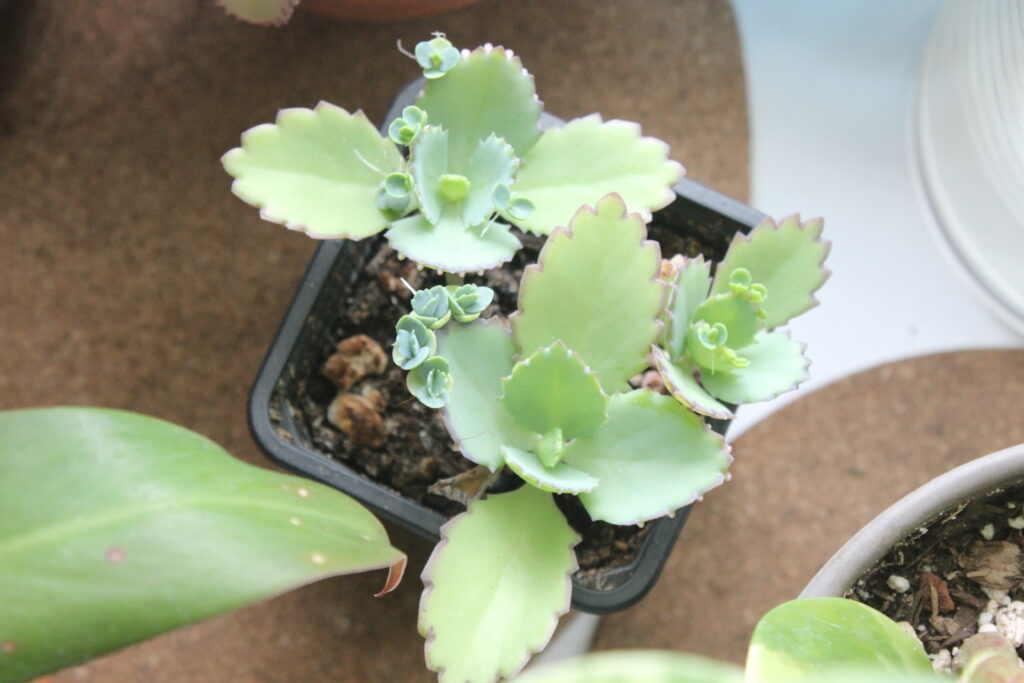
Genus Aeonium:
This genus has about 35 species and is characterized by succulent leaves arranged on a basal stem. This genus also has free standing petals that are arranged around it in rows divided into 6 or 12 sections. Each rosette produces a central infloresence only once and then dies back. There are low growing species as well as large species. This genus is closely related to the Sempervivum. Aeoniums have their growing season during the winter.
Look For: Echeveria like rosettes that grow on top of a thick stem that grows like a tree trunk. Thicker, hardier leaves compared to an Echeveria and cluster growing rosettes around the stem.
Most Common: Aeonium ‘Kiwi’, ‘Aeonium ‘Sunburst’
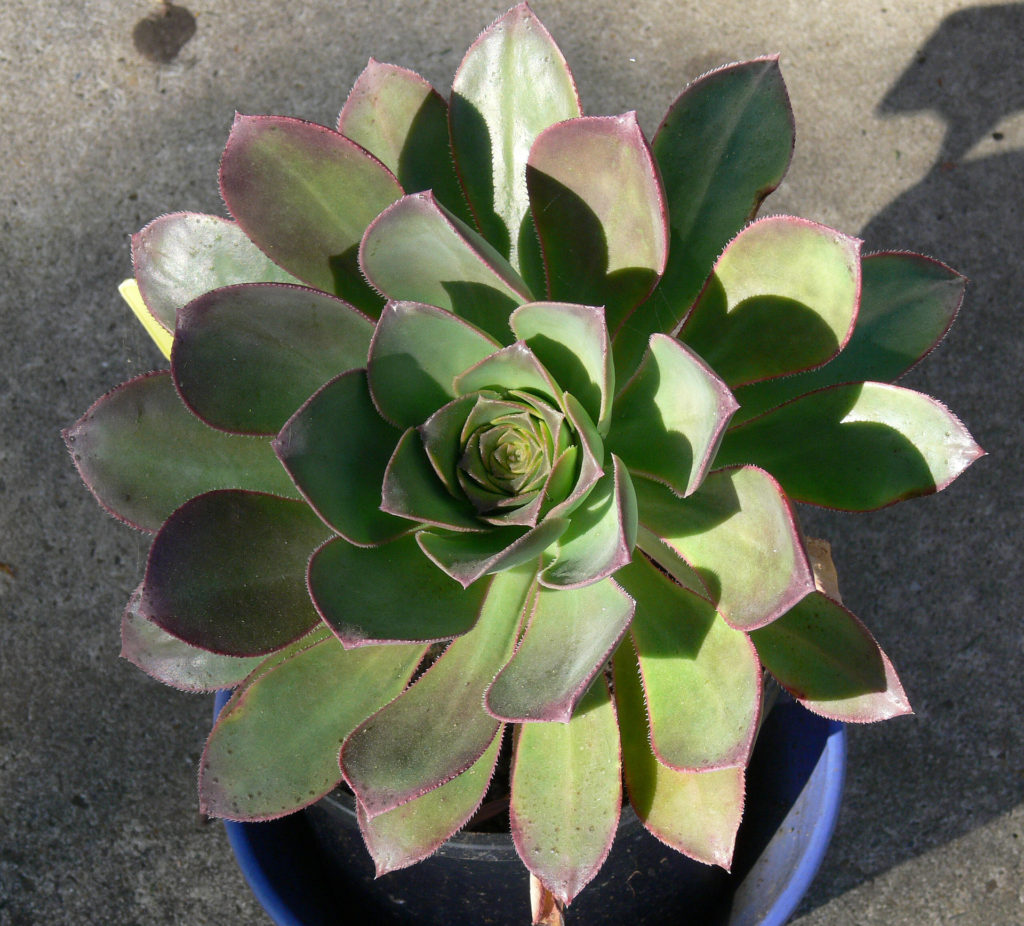
Genus Adromischus:
Green to gray succulent leaves with branches covered in orange aerial roots. It is a perennial succulent endemic to the Cape of South Africa.
Look For: Fat plump leaves filled with water and thin hairy-like aerial roots
Most Common: “Key Lime Pie”
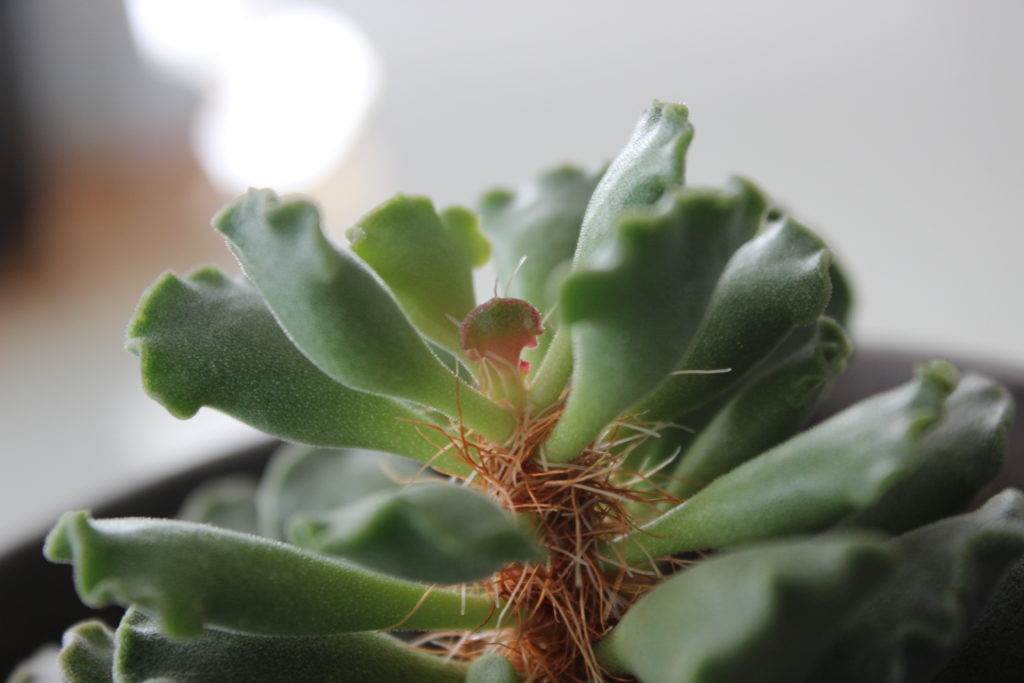
Genus Sempervivum:
Consists of about 40 species of flowering plants commonly known as the “houseleek” or “hens and chicks”. It forms mats of tufted leaves in the shape of rosettes. As it matures it will spread via offsets.
Look For: Spikey sharp leaves that grow very tight and close together.
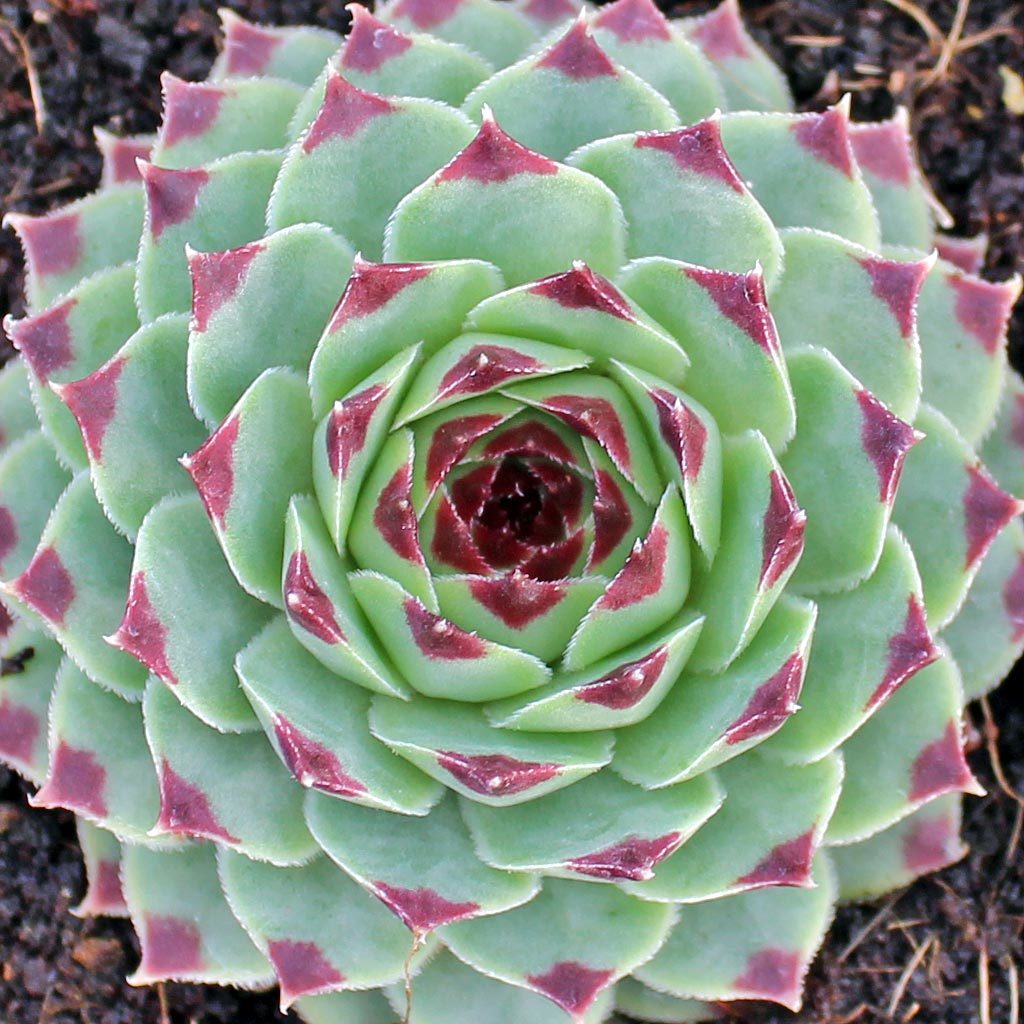
Sempervivum Calcareum (colors from winter stress) 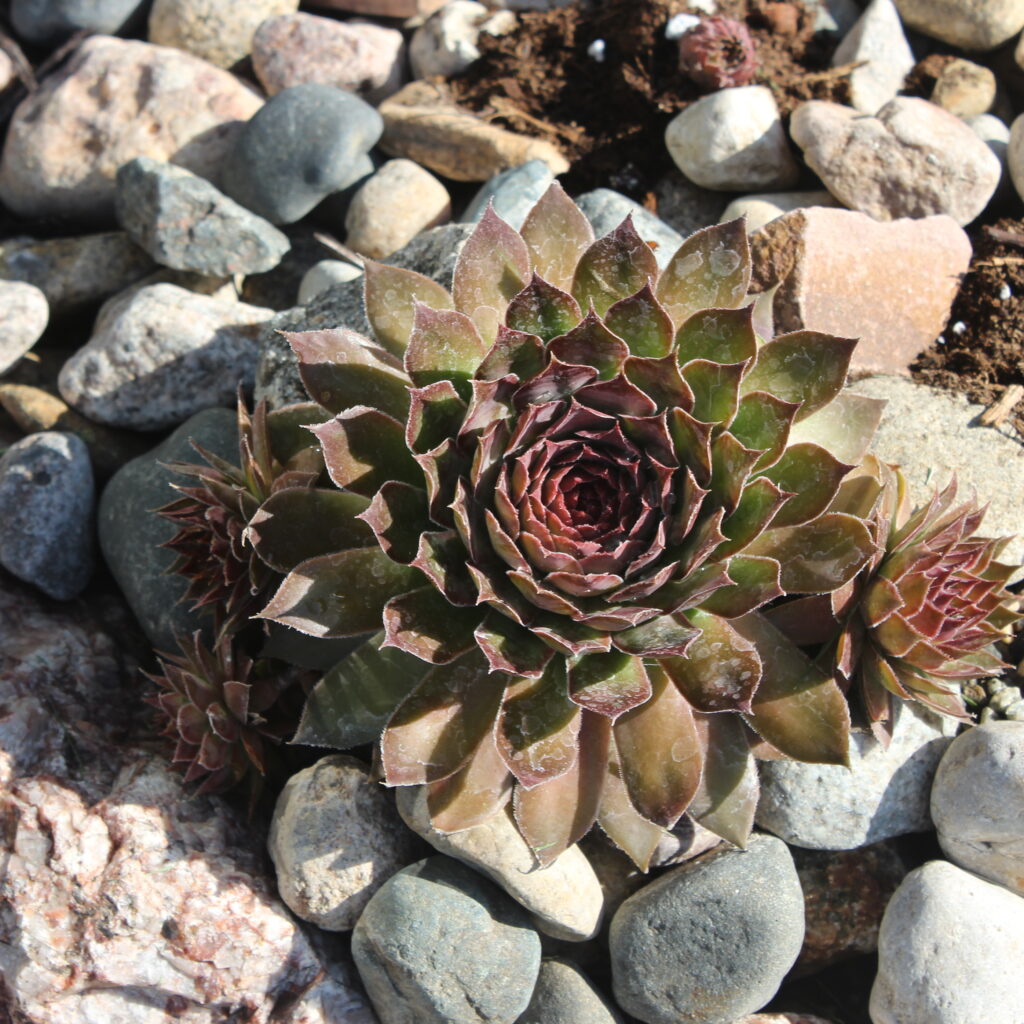
Succulent Rock Garden | SuburbanSill
Genus Crassula:
This genus has over 200 varieties including the Crassula Ovata Jade and Ovata Gollum. It is a succulent shrub that grows upright and sometimes into a small tree type plant. Some species creep and climb.
Look For: Long stalks with rows ad rows of leaves layered on top of each other. Raising up out of the pot like a tree.
Most common: Carassula Conjuncta or Jade Plant
For a more in depth look at this genus, check out this post and video on how to identify crassula.
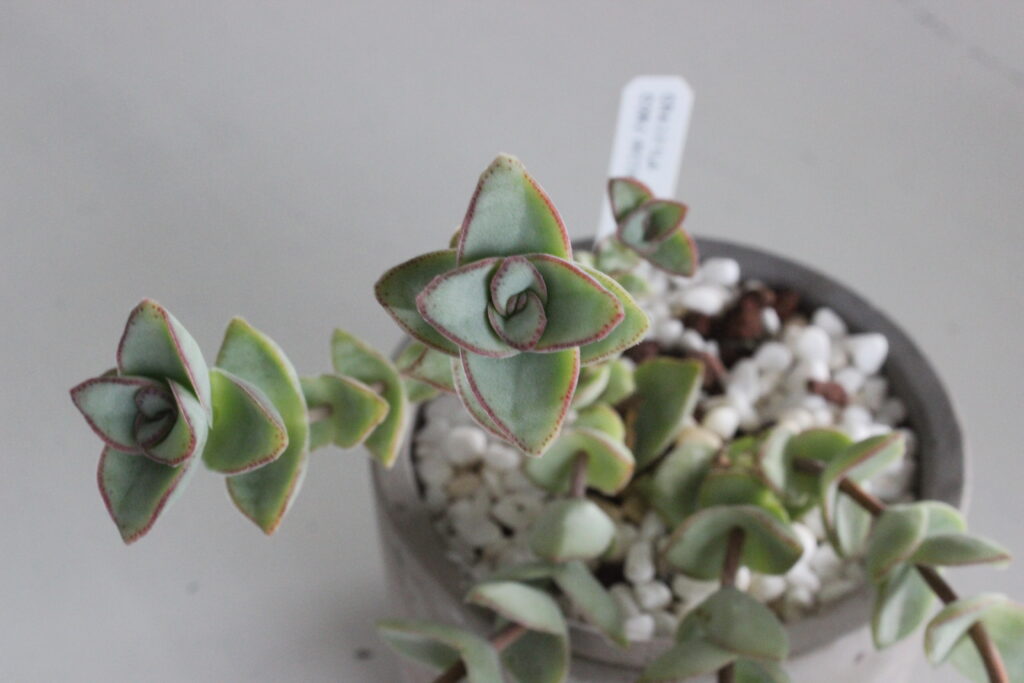
Crassula Conjuncta | SuburbanSill 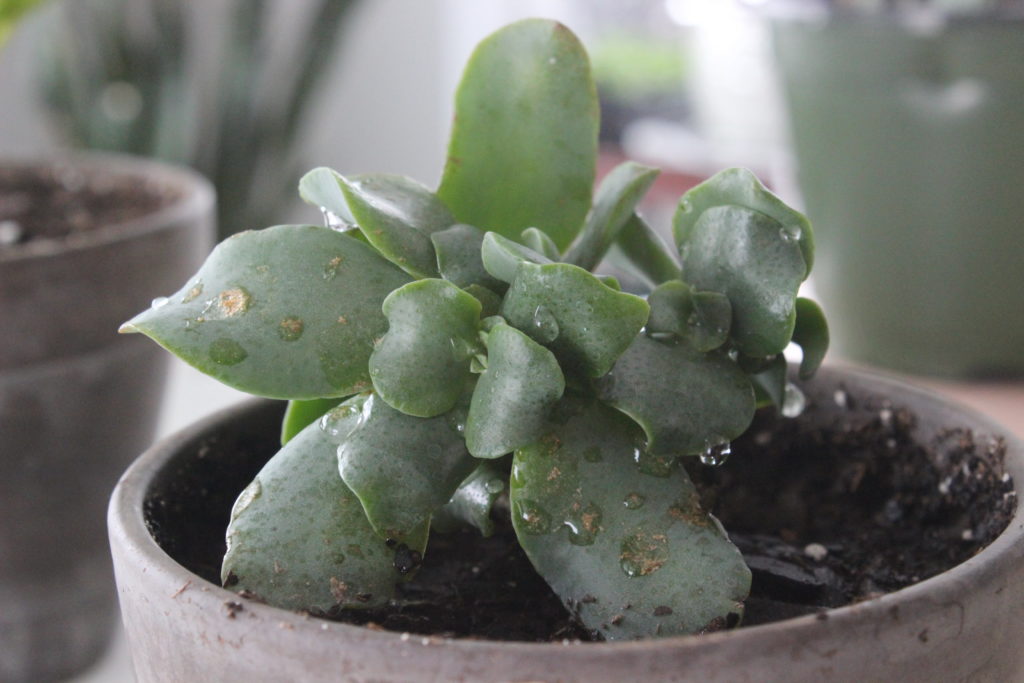
Crassula arborescens undulatifolia “Ripple Jade” 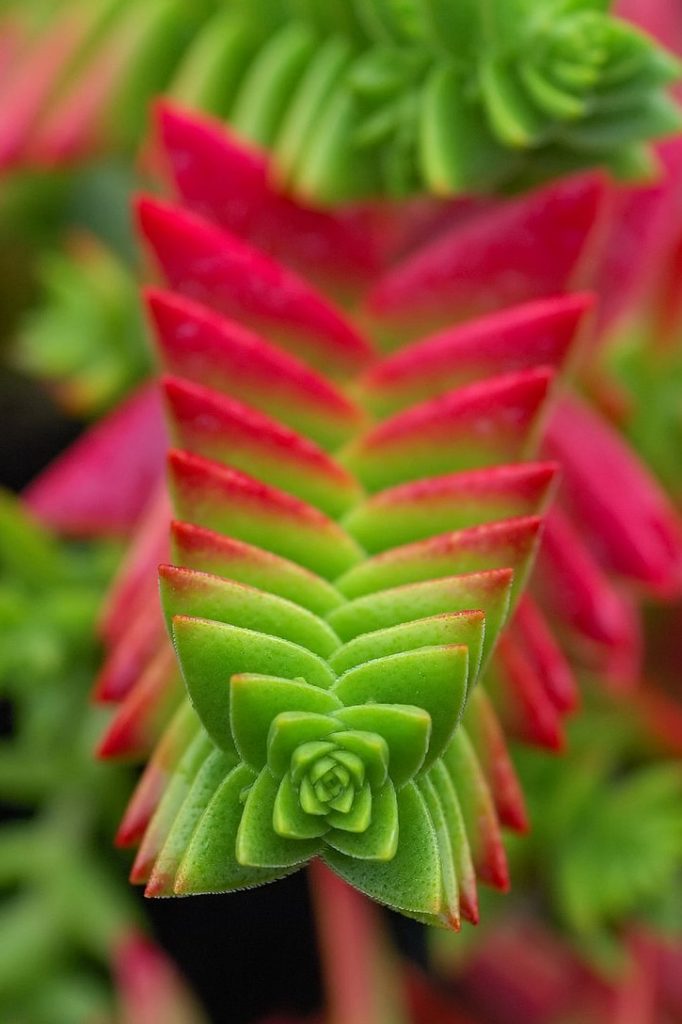
Crassula Capitella Crop By Eric Hunt – Own work 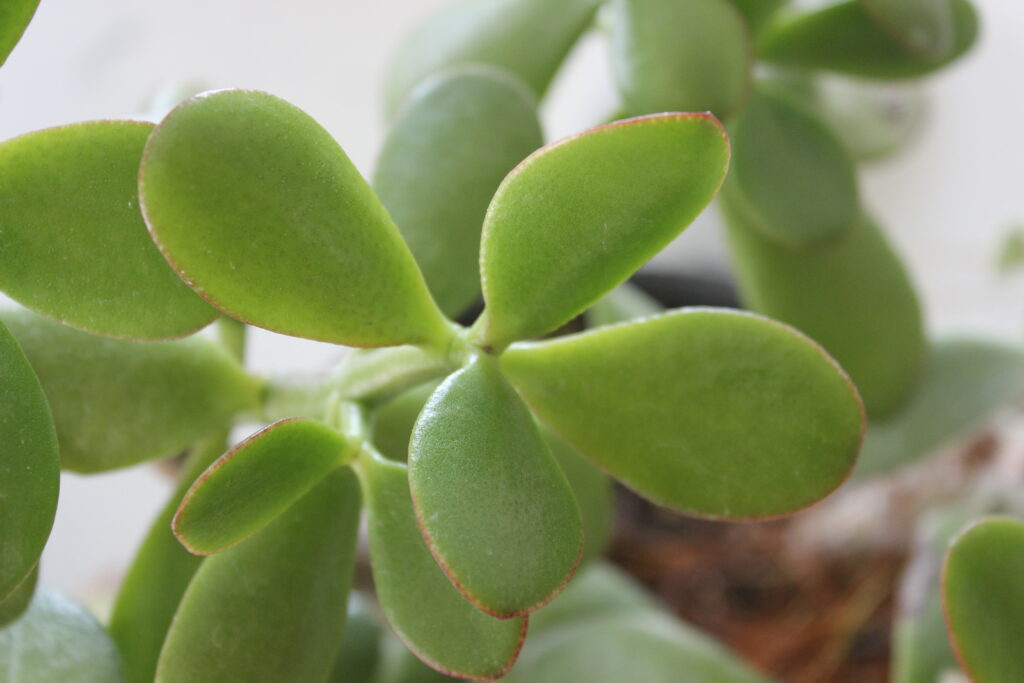
Crassula Ovata | SuburbanSill 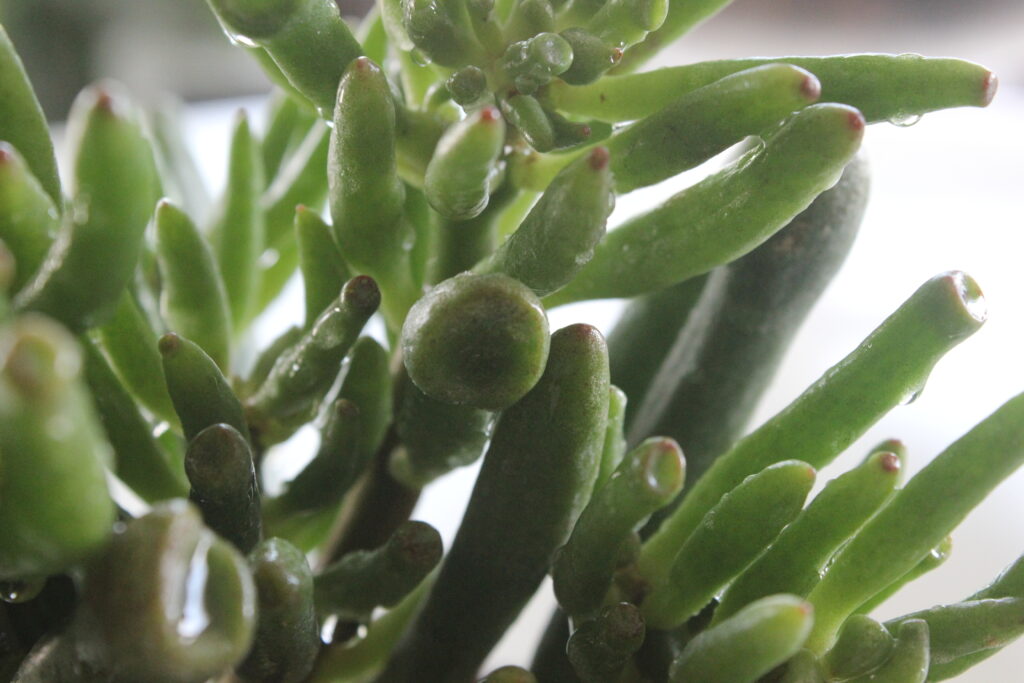
Crassula Ovata “Gollum” | SuburbanSill
Aizoaceae Family:
Lithops “Living Stones”: This succulent is comprised of two bulbous looking leaves, side by side with almost no stem. The are called living stones because, well, they look like rocks. There is not problem identifying this succulent, but it is fascinating in its peculiarity.
Lapidaria: Similar to the Lithops, Lapidaria looks like stones with leaves side by side, however instead of just the two leaves you will find 2, 3 or 4. The leaves also have sharper lines instead of the circular shape of Lithops.
Pleiospilos “Split Rock”: Like the Lithops, the Pleiospilos has two bulbous leaves set side by side but instead of the two you will find three or more. Two leaves with a large bulbous leaf in the middle.
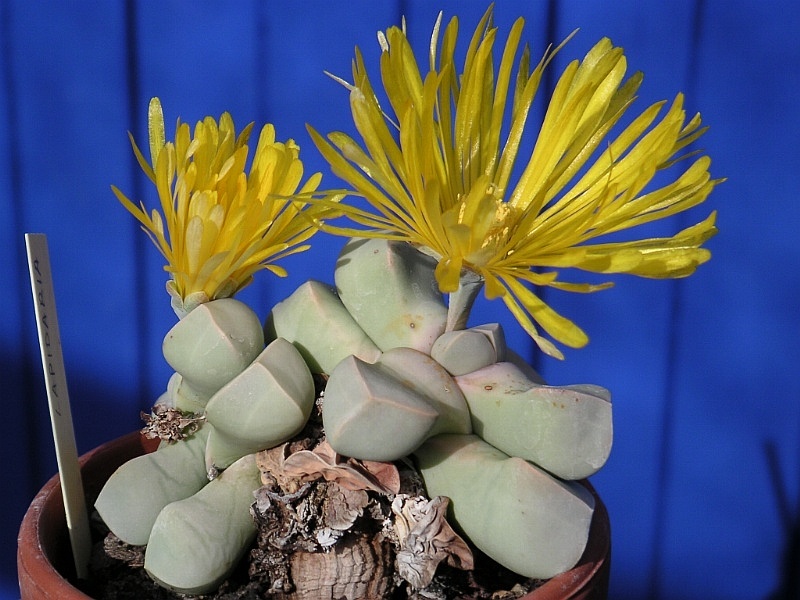
Lapidaria – By Jean-Jacques MILAN 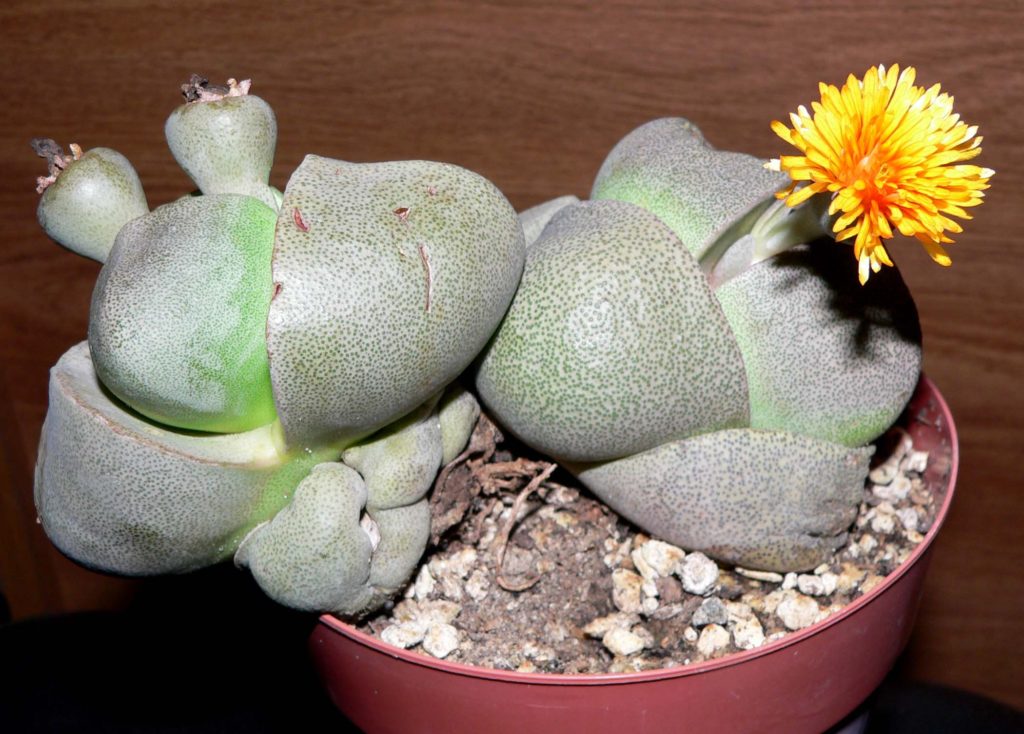
Pleiospilos Nelii 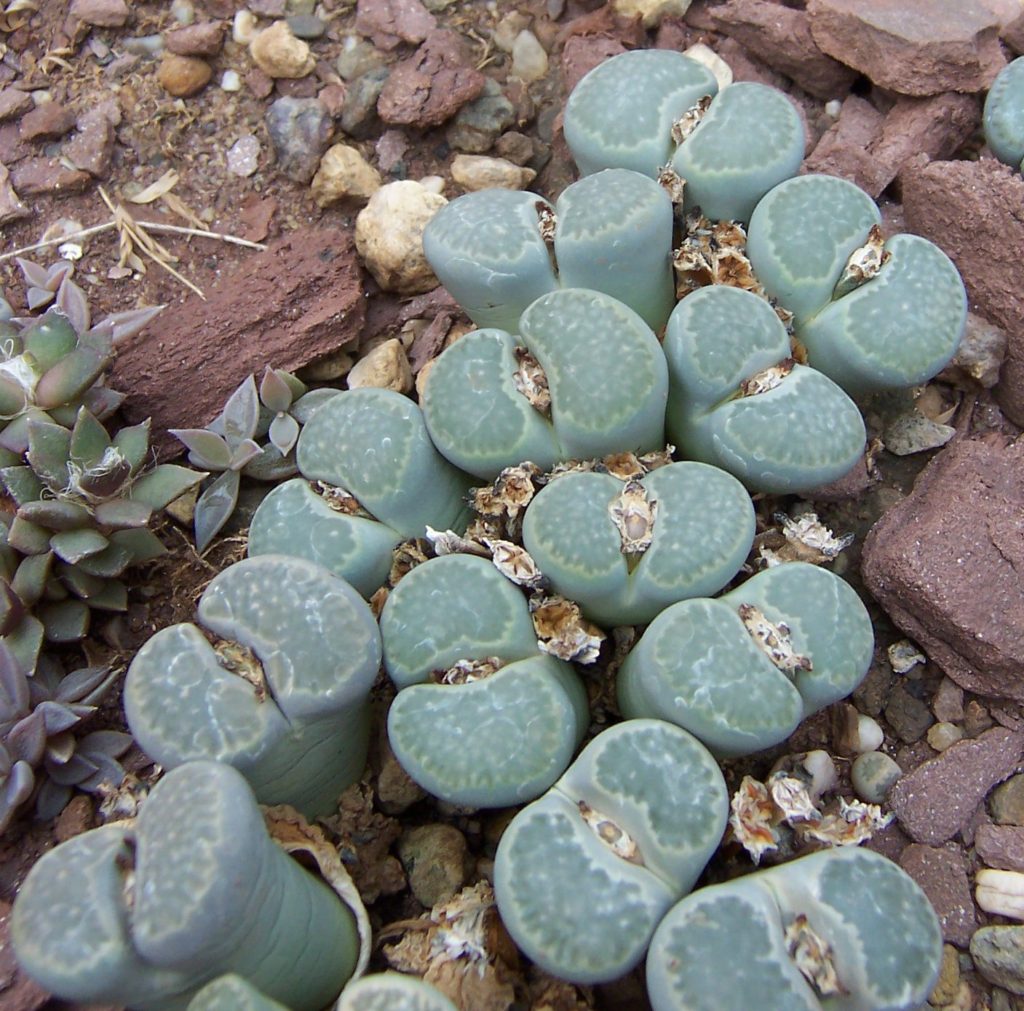
Lithops Salicola
Fenestraria: Succulent, plump leafs each containing an epidermal window. This clear looking window allows for light management.
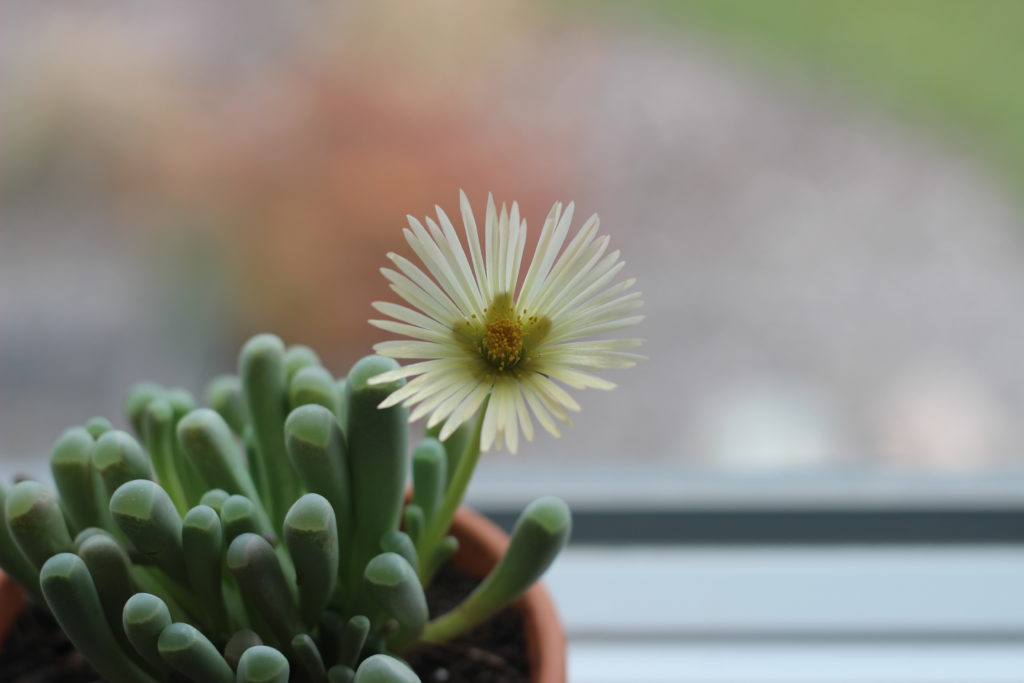
Asphodelaceae Family:
Genus Aloe: This Family includes three subfamilies, Xanthorrhoeaceae, Hemerocallidoideae, and Asphodeloideae. The genus Aloe is classified under Asphodeloideae. Most folks won’t have a hard time identifying aloe. The aloe species have a rosette that in some cases appears to come straight from the ground, The produce tubular flowers and has plump leaves filled with water. It comes in various color and has been cultivated to create many new varieties. There are over 500 species of aloe.
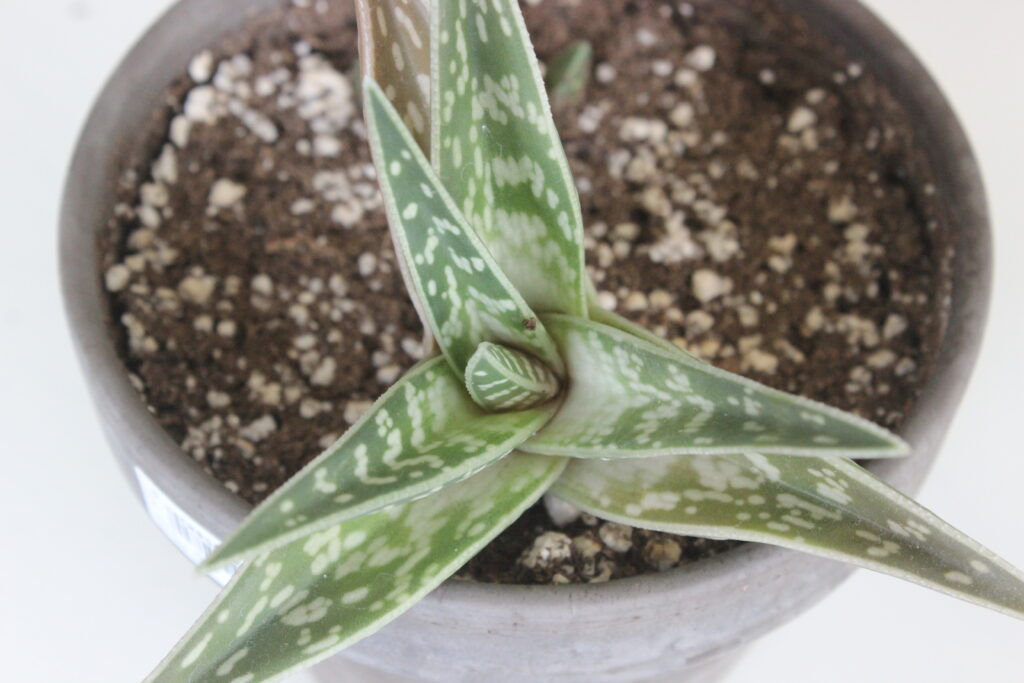
Gonialoe variegata “Tiger Aloe” 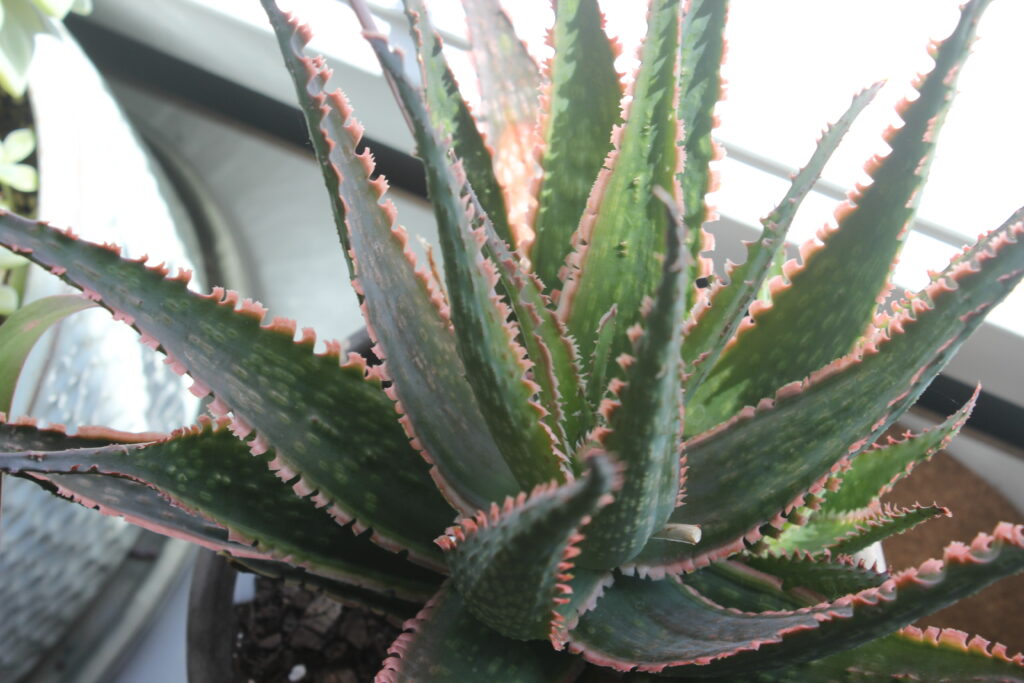
Aloe “Coral Fire” 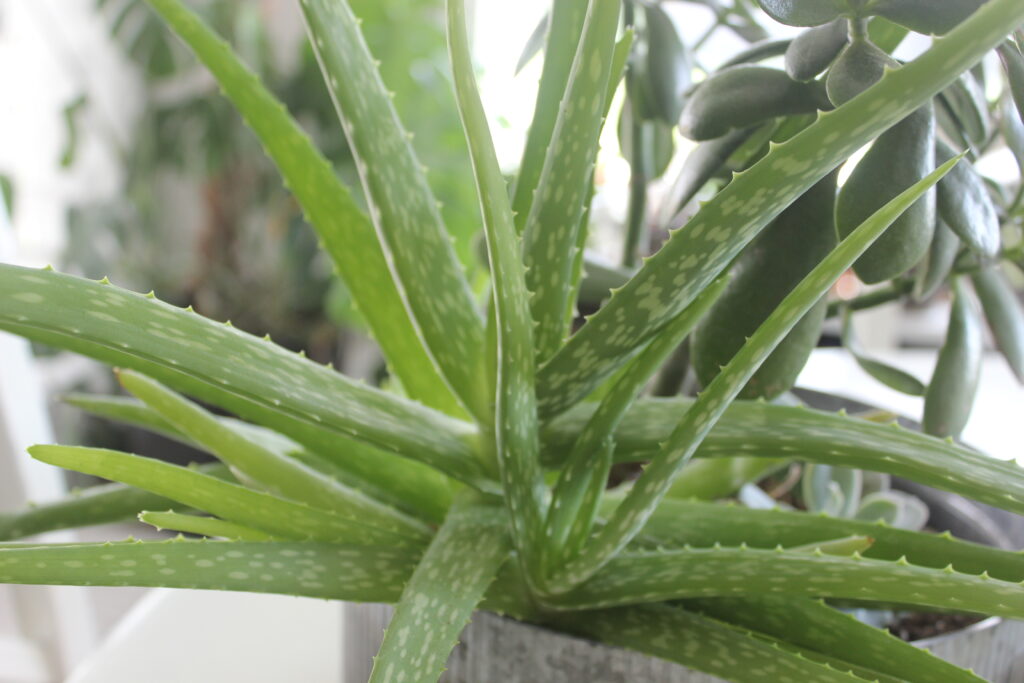
Aloe vera
Genus Haworthia: this is a small succulent that in some species has tough, rough leaves and in others have softer leaves with a translucent color that allows sun to reach the internal photosynthetic tissues of the plant.
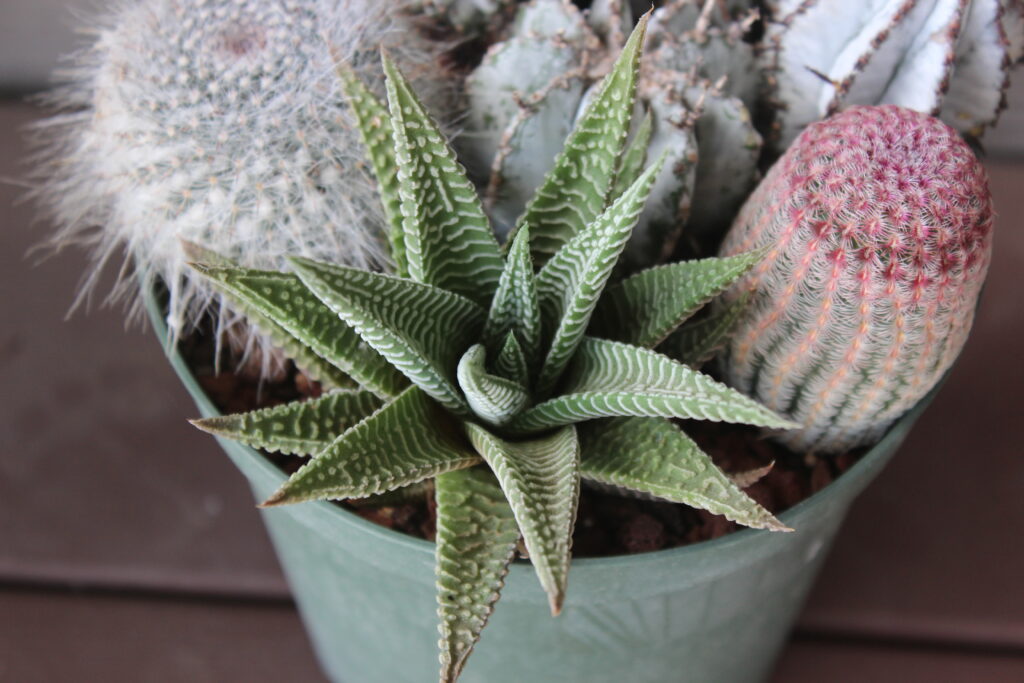
Didiereoideae Family:
Spiny succulent shrubs and trees found mostly in South Africa and Madagascar. It contains 3 subfamilies, 6 genus and 20 species.
Look For: Bush like shrubs, with small succulent leaves an small branches.
Most Common: Portulacaria afra “Elephant Bush”
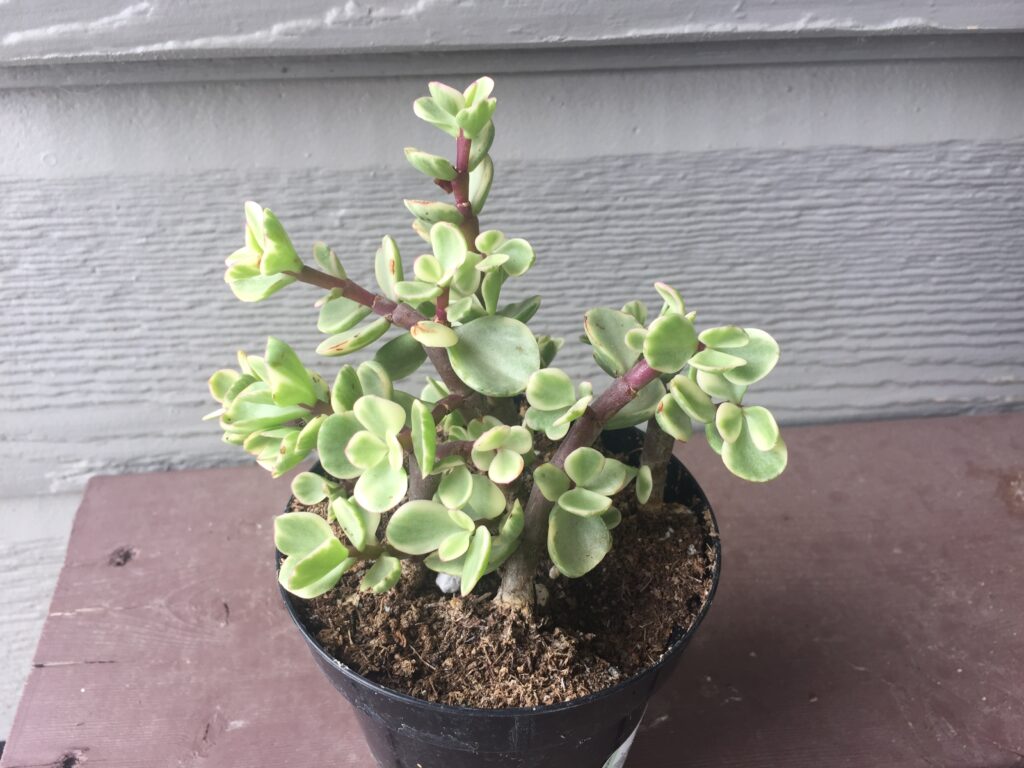
Terms:
Basal Stem: Basal means “base” or “bottom” which is why you see this succulent crowded around the bottom of it’s stem. Example is Houseleek or Aeonium.
Infloresence: Cluster of flowers arranged on a stem.
Margin: The variance in color around the edge of the leaves. (See “red” tips on Echeveria Agavoides
Offset: Complete “daughter” or look-a-like plant produced and extending from the “mother” plant.
If you have a unique succulent you would like to share to help improve our succulent identification guide, please leave a comment below or contact us!

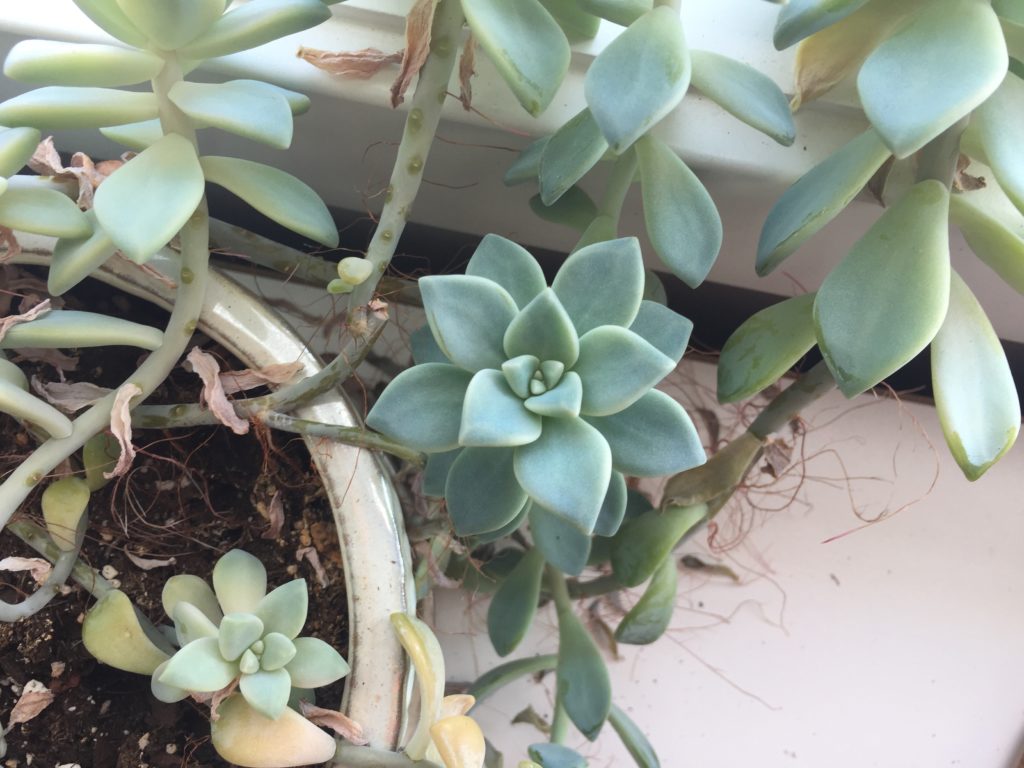
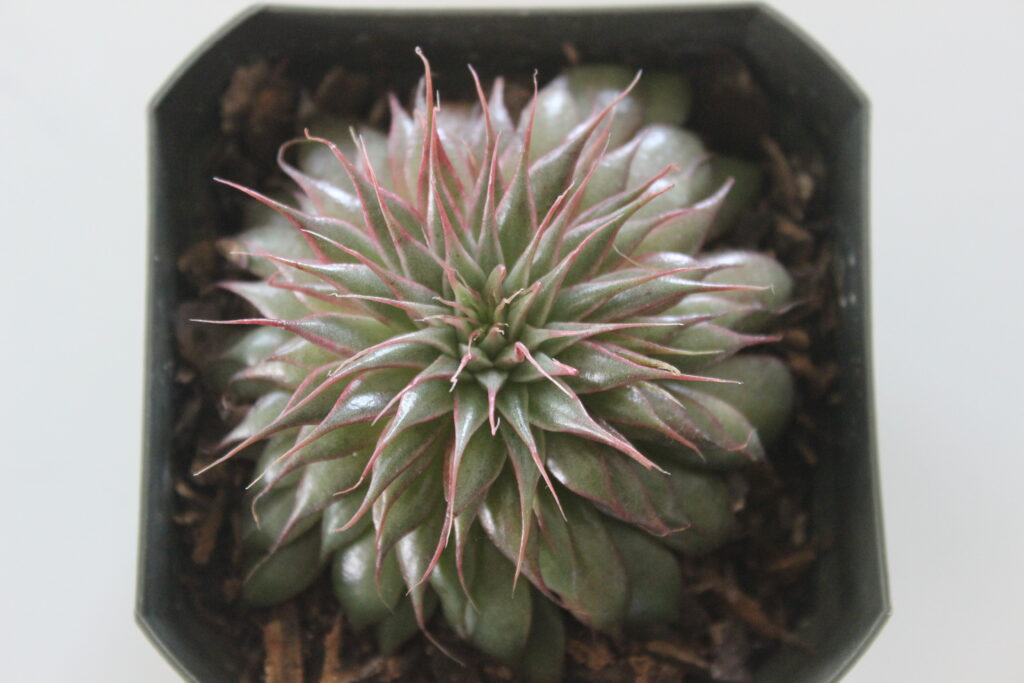

That is a nice helpful resource article! Im like you and become almost obsessive about trying to figure out what kind of succulent i have…and nothing makes me more disappointed in a plant distribution nursery that puts names like “crassula spp” or “succulent plant” or any other generic name on their label. If you grow it and you distribute it to stores for people to buy then yousl should label each plant with their scientific name. After a year and a half of researching and best guess, i only have a handful of plants that still stump me
I hear ya! For me it is the Echeveria that are the hardest. They all look so similar. I am learning that a lot of plant I.D. comes from how it flowers, which when you grow inside, you might not every see the flower.